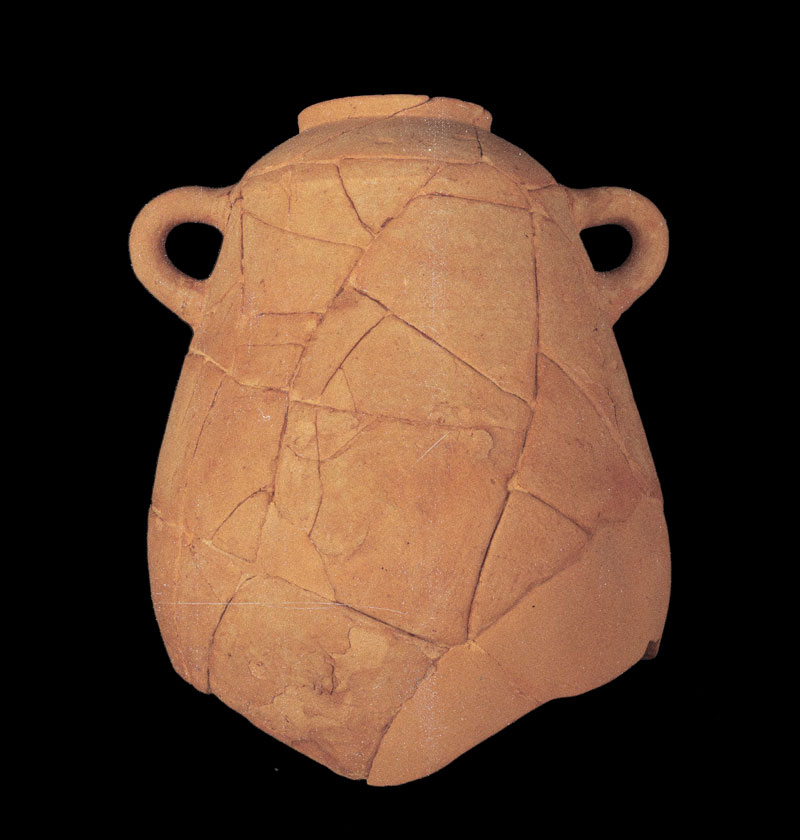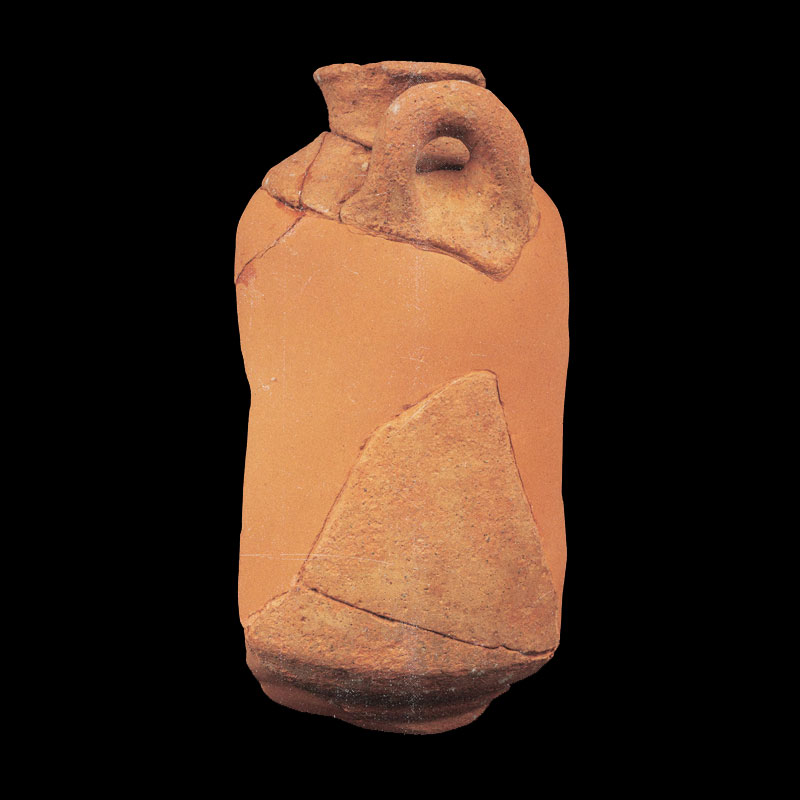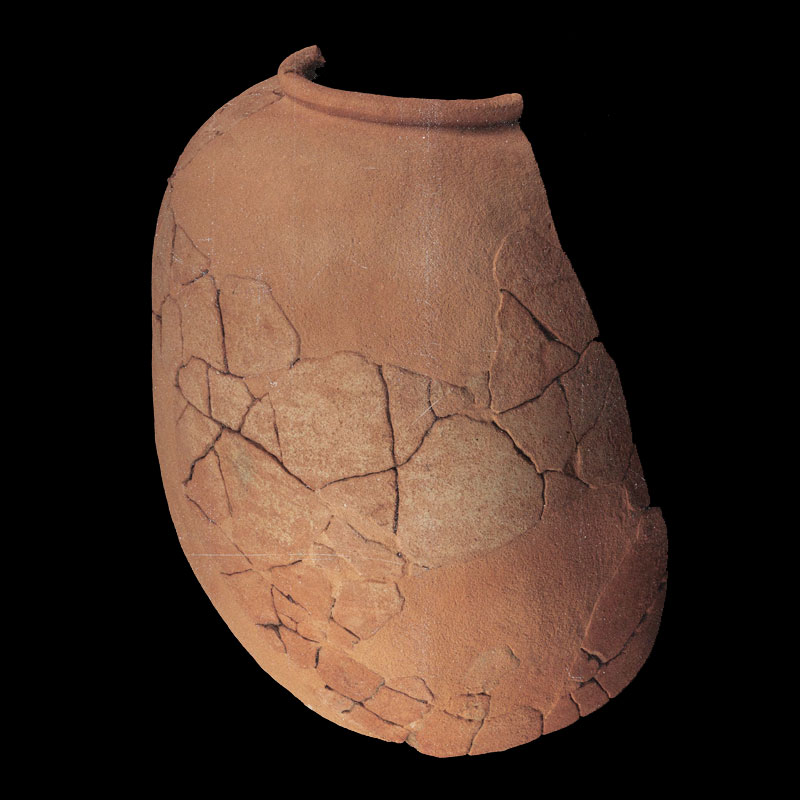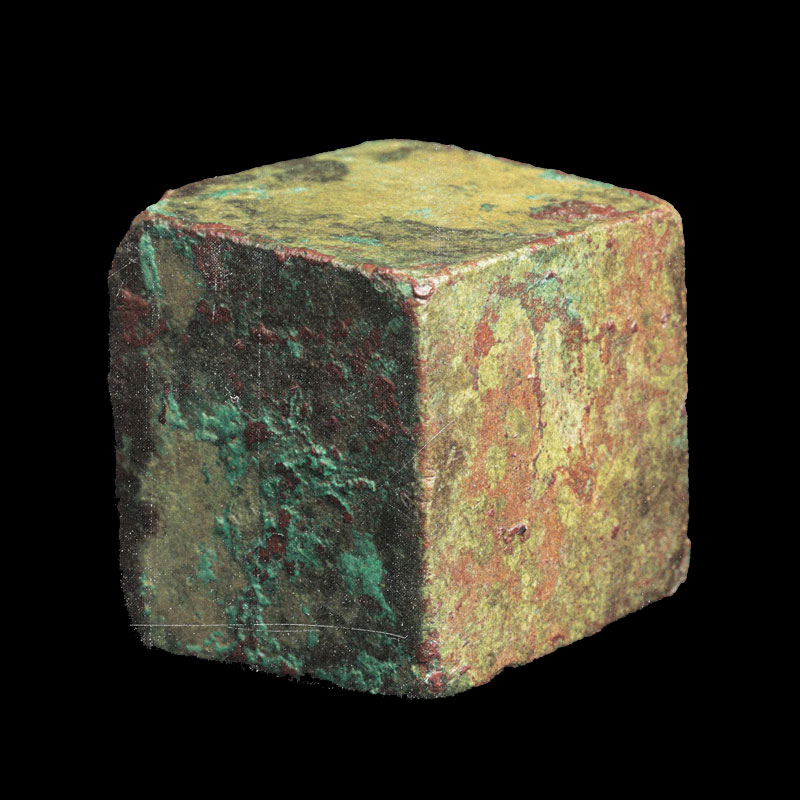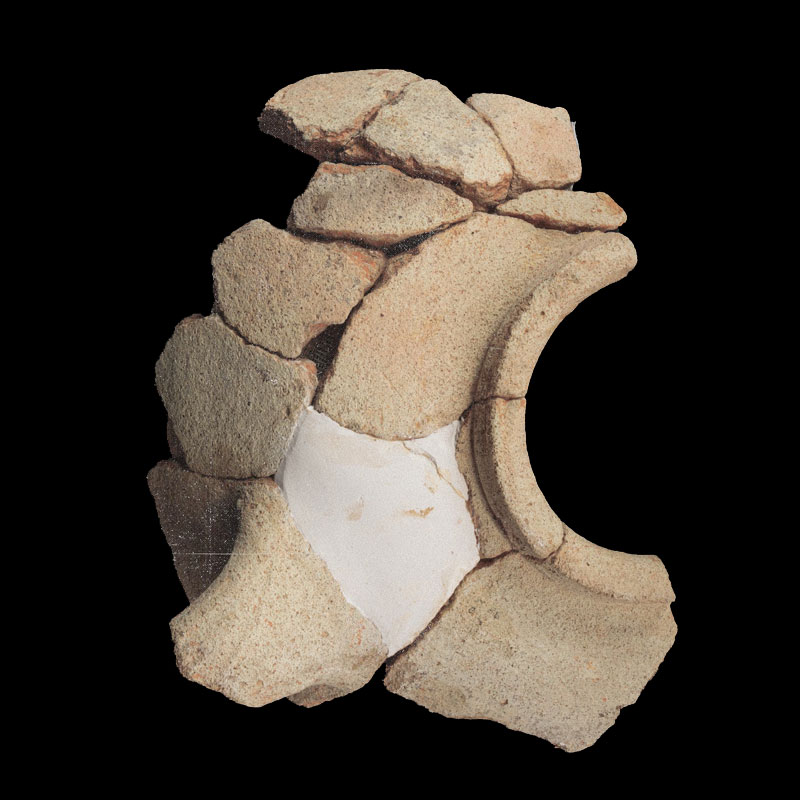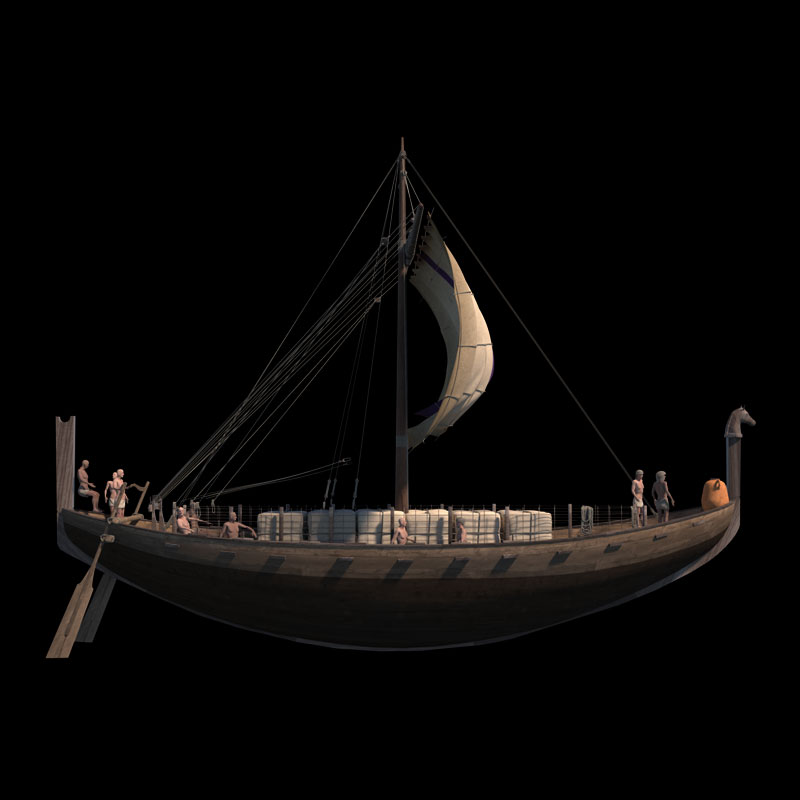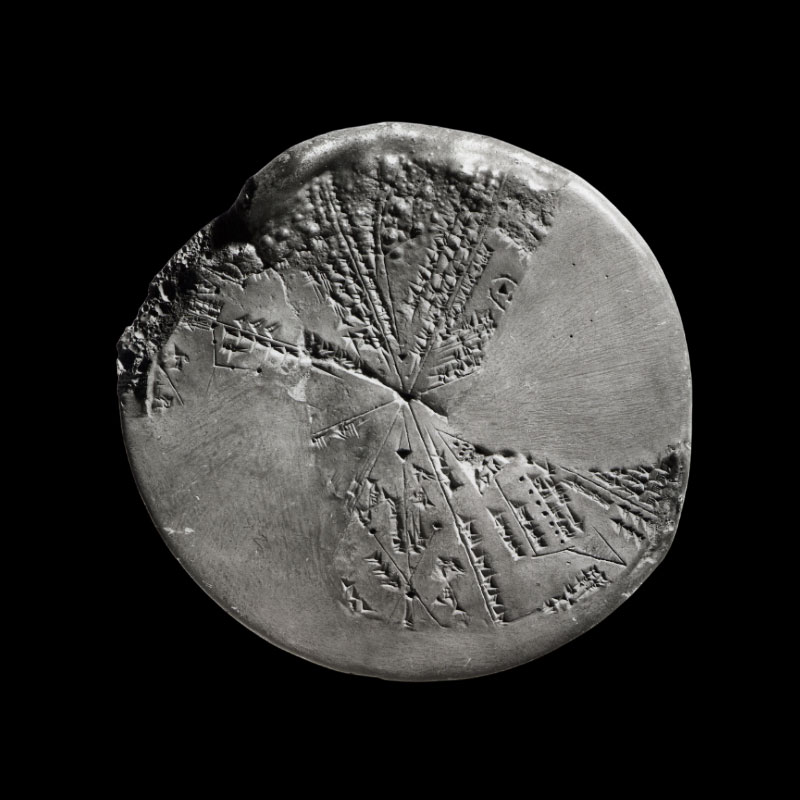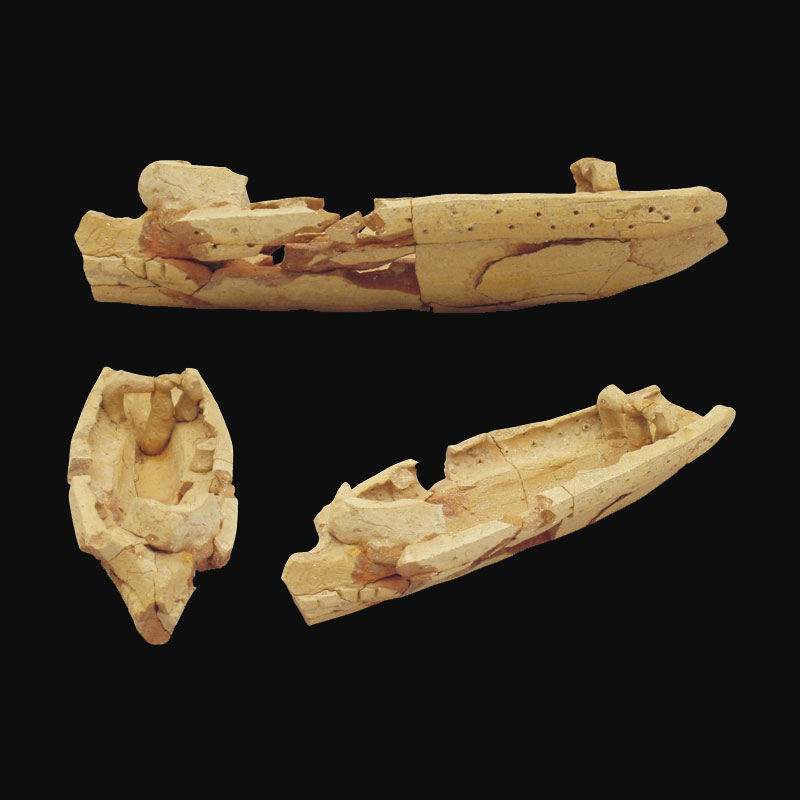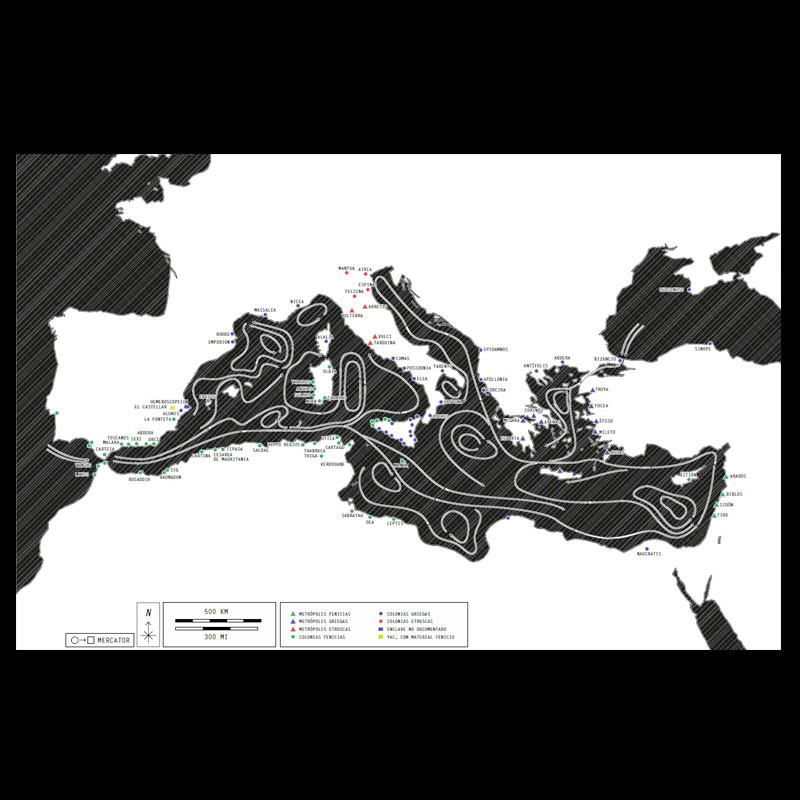Horizontal handle vase
Amphora of type T.-2.1.1.2.
Bronze Weight
Amphora mouth fragment
Throughout prehistory, the Mediterranean has been an important means of communication and trade. It was with the arrival of the Phoenicians that these exchange routes became clearly evident. The Phoenicians brought not only goods, but also knowledge, new products and technology for both the material and spiritual worlds.
A VERY DIVERSE TRADE
Ancient trade experienced notable diversification due to the growing need for a wide range of products, especially driven by the demand for consumer goods, especially among the elites. Luxury items such as ivory and purple were sought, as well as specific raw materials such as wood, and, notably, metals for everyday uses, exchange, and war purposes. Metals such as tin, copper, gold and silver became increasingly essential and in demand.
Strategically located Phoenicia became a crucial centre supplying this growing demand for metals, prestige and luxury products. This development encouraged the creation of new trade routes to the west, further consolidating the Phoenician position as a commercial and maritime power in the region.
SA CALETA, COMMERCIAL PORT
Sa Caleta, as a first option, may have had some importance as a stopover point, intermediary and commercial connection between various areas of the Iberian Peninsula and other areas of the western and central Mediterranean. Standing out for being located on an accessible peninsula with good shelter for boats, close to vital resources and favourable natural conditions for urban development.
In Sa Caleta, trade was essential since various products needed to be acquired, including ceramic containers that contained other elaborations. Most of these wheel-turned ceramic containers came from the south of the Iberian Peninsula, mainly from the Malaga area. On the other hand, the handmade ceramics had diverse origins, including the coast of the northeastern peninsula, the southeastern Iberian coast, the Malaga area and the Balearic Islands.
These ceramic containers surely contained or accompanied the products demanded and acquired by the inhabitants of Sa Caleta, such as agricultural products or minerals. In exchange, Sa Caleta could have provided salt, processed metals, fishing products or fabrics.
According to Diodorus, Ibiza would have vineyards and olive trees; It would not, however, be so rich in grain, as Pomponius Mela tells us (II 125-126), who recognizes its abundance in other products. According to J. Ramón, the crops of Ibiza would be similar to those of the Punic fields of North Africa, such as Libyan cabbage, garlic, lentils and fruits such as pomegranate (called the “Punic apple”), pears and, above all, figs (“the best and largest are found on the island of Ebusus” states Plinus, Hist. nat. XV 82).
From
Sa Caleta
about trade in prehistoric times
From
Sa Caleta
about trade in prehistoric times
Virtual reconstruction of a hippo
Fragment of a circular tablet
Punic Birrem
Map of the metropolises and Phoenician colonies
The Mediterranean has been an important communication route since ancient times, travelled since prehistory. The Phoenician navigation routes covered the entire Mediterranean, from the far East Mediterranean coast to the Atlantic, connecting different regions and civilizations and facilitating extensive commercial and cultural exchange.
MASTERY IN NAVIGATION
The Phoenicians, being masters of the Mediterranean Sea, developed advanced navigation techniques that allowed them not only to promote navigation as an efficient means of transportation, but also strengthened trade, facilitated communications and enhanced their military capabilities, consolidating their dominance in the Mediterranean and beyond.
During the day, they oriented themselves using the sun as a guide, whilst at night they relied on the star Hwab, known as “stella Phoenica”, as their reference in the darkness of the ocean. With skill in handling sails and a deep knowledge of ocean currents, they were capable of sailing long distances efficiently. This ability allowed them to establish colonies and trade throughout the Mediterranean and beyond. In addition, they implemented astronomical navigation systems, based on advanced mathematical and astronomical knowledge, which enabled them to draw precise routes and anticipate weather conditions, ensuring safe and effective navigation.
This mastery of the sea was supported by a series of technological advances. They introduced advanced sealing methods for boats, ensuring greater strength and durability in naval structures, essential to face maritime adversities. Likewise, they developed a defined keel that acted as the backbone of the ship, improving its stability in the water and allowing safer explorations towards distant territories. They perfected the boats’ rigging, optimizing the use of the winds and improving the efficiency of their journeys.
IBIZA: MARITIME AXIS
Ibiza stood out as a crucial point on the ancient sea routes, facilitating the flow of trade between the central Mediterranean and the west. The control of ports such as Sa Caleta provided the Phoenicians with opportunities for supply and refuge, in addition to consolidating their role as a distribution centre for products and trade. From Ibiza, they directed their shipments to various regions, making it a vital hub for Phoenician trade in the western Mediterranean.
“There is an island called Pitiusa, whose name is due to the abundance of pine trees that grow on it. It is located on the high seas and is three days and three nights of navigation from the Pillars of Heracles, from Libya one day and one night, and from Iberia one day; Due to its extension it is similar to Corcyra. The island is not excessively fertile; It has little cultivated land planted with vines and olive trees grafted on wild olive trees. Of what is produced there, they say that what takes the bicuit is the extreme softness of its wool. The island alternates between plains of notable extension and hills, and it has a city called Éreso, a colony of the Carthaginians. It also has excellent ports; large walled buildings and a significant number of well-built houses are inhabited by barbarians of various ethnic groups, but the Phoenicians predominate. after the founding of Carthage” Diodorus of Siculus, Book V, 16.
Sa Caleta
on navigation

